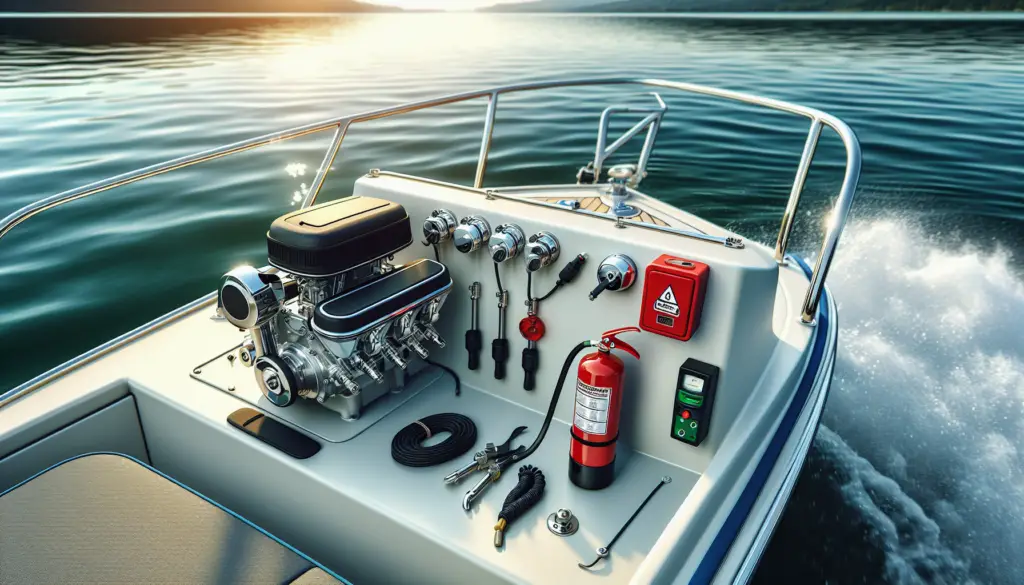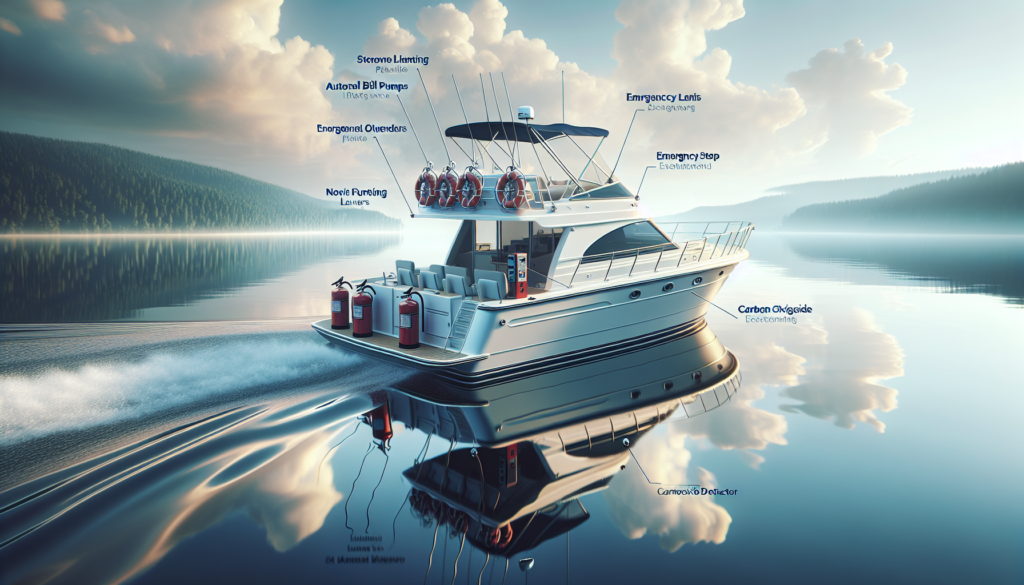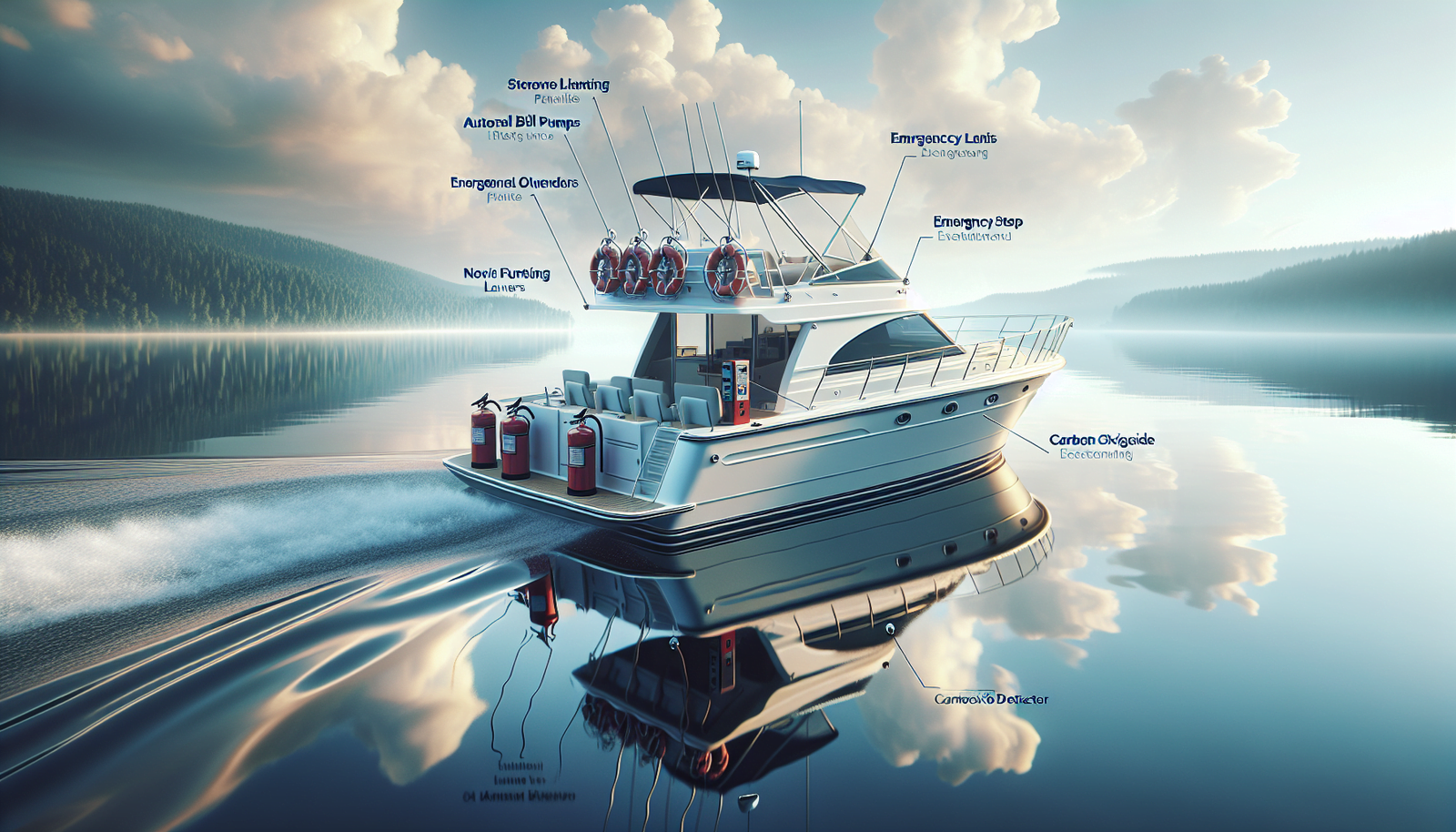As a boating enthusiast, it’s crucial for you to prioritize safety alongside enjoyment. The article “Must-Have Safety Features For Your Recreational Boating Boat Engine” offers key insight on crucial safety enhancements for your boat engine that you cannot afford to disregard. Ensuring your vessel is equipped with these specified features isn’t just about adhering to boating regulations, but it’s also about securing a peace of mind during your water escapades. This article serves as a guide to elevate your boating experience to a safer, more secure level.

Understanding the Importance of Boat Engine Safety
Boat engine safety might not be the most enticing topic, but it’s a significant one that you don’t want to overlook. When you’re out on the water, your life and the lives of your passengers largely depend on the performance and safety of your boat’s engine.
Role of engine in boating safety
The engine is the heart of your boat. It provides the power needed to navigate and steer clear of potential hazards. It also powers crucial safety equipment, including radios for communication, navigation systems, and emergency signaling gear. So, the importance of a well-maintained, dependable engine in ensuring boating safety is quite high.
Consequences of engine failure at sea
Engine failure at sea can turn a fun day out on the boat into a dangerous situation pretty quickly. You could find yourself stranded far from help, facing the risk of drifting into unforgiving sea conditions or even busy shipping routes. Gas leaks and fires are other potential problems, not to mention the harmful environmental impact of leaks and spills. Therefore, maintaining engine safety is of utmost importance.
Engine Kill Switch
Understanding and respecting all the safety features of your boat’s engine will give you a more secure and comfortable ride.
Definition of engine kill switch
An engine kill switch, also known as an emergency cut-off switch, is a safety device designed to shut off the engine immediately in case of an emergency. It’s essentially a fail-safe measure that prevents you from losing control of your boat.
Importance of engine kill switch for safety
If you stumble, fall, or get thrown off your boat, an engine kill switch can be a real lifesaver. Once activated, it cuts off the engine, stopping the boat from continuing on its course without you. This can prevent several truly dangerous situations, such as the boat running aground or endangering other nearby vessels.
How to use an engine kill switch properly
Typically, the engine kill switch is attached to your belt or life jacket by a lanyard. Should you get thrown overboard, the lanyard will pull the switch, and the engine will be immediately shut off. For proper use, always ensure the lanyard is securely attached before you set sail.
Exhaust Fans and Blowers
Keeping your boat well-ventilated is not just about comfort but safety, too.
Why proper ventilation is important
Ample airflow helps to prevent engine overheating – a key cause of engine failures and boat fires. Furthermore, ventilation helps to remove potentially harmful gases, including carbon monoxide, from the engine area and living spaces.
Role of exhaust fans and blowers
Exhaust fans and blowers are designed to help maintain good airflow within your boat, particularly in the engine compartment. They help vent out engine heat and any built-up fumes, reducing risks associated with overheating and harmful gases.
Installing and maintaining exhaust fans and blowers
Regular inspection of your exhaust fans and blowers, followed by timely maintenance or replacement, is crucial for their efficient performance. Make sure they are appropriately placed for optimum airflow, and ensure they are firmly affixed and free of dust and debris.
Carbon Monoxide Detectors
Carbon monoxide, often referred to as the ‘silent killer,’ is an odorless, colorless, and tasteless gas that’s also highly poisonous. In a boating context, it’s a real threat.
Risks of carbon monoxide in boating
Carbon monoxide is produced whenever you burn fuel. Therefore, your boat engine, heaters, stoves, and lanterns are all potential sources. In confined spaces, even a small amount of carbon monoxide can be fatal, leading to unconsciousness, and potentially death.
How carbon monoxide detectors work
Much like a smoke alarm, a carbon monoxide detector signals the presence of this deadly gas. Ideally, you will never hear this alarm, but if you do, you must take immediate action – move to fresh air right away and seek medical help.
Where to install carbon monoxide detectors
Install carbon monoxide detectors in places where people spend time such as sleeping areas and the main cabin. Ensure that the detectors are functioning correctly and regularly check their battery levels to ensure their effectiveness.

Flame Arresters
Flame arresters are critical but an often-overlooked part of boat engine safety.
What are flame arresters
Flame arresters are devices that prevent the ignition of flammable gases. Installed as part of the engine’s air intake system, they stop an explosion from reaching fuel sources.
Importance of flame arresters for boat engines
Without flame arresters, a minor backfire could ignite fuel vapor within the engine, leading to a potential explosion. Therefore, flame arresters are essential safety components that can prevent you from a catastrophic event.
Steps to maintain your flame arresters
Clean and inspect your flame arresters regularly to ensure they are not clogged or damaged. A damaged flame arrester might fail to function correctly in an emergency, and a clogged one can restrict airflow to the engine, leading to poor engine performance or even a stall.
Fuel Shutoff Valves
Don’t underestimate the importance of being able to control and halt your boat’s fuel flow.
Purpose of fuel shutoff valves
Fuel shutoff valves allow you to control the flow of fuel to your boat’s engine. In the event of a fire or a fuel line leak, being able to stop the fuel supply quickly can prevent a dangerous situation from escalating.
How to operate fuel shutoff valves
Operating fuel shutoff valves is often as simple as turning a lever or a knob. Familiarize yourself with the location of these valves and how to operate them effectively, preferably in various lighting conditions and under stress.
Maintenance and inspection of fuel shutoff valves
Regular inspection and maintenance of your fuel shutoff valves are essential. Check to ensure they turn easily, and are not clogged or leaking.
Regular Engine Check and Maintenance
Nothing beats regular engine check-ups and maintenance when it comes to boat engine safety.
Importance of regular engine check
A regular engine check can help identify minor issues before they become major headaches. It reduces the chances of engine failures, saves on costly repairs, and more importantly, helps ensure your safety at sea.
Basic engine maintenance procedures
Regular engine maintenance should include oil changes, replacing spark plugs, checking and replacing belts or hoses if needed, inspecting the fuel system for leaks, and ensuring all safety devices are working correctly.
Signs that your boat engine needs maintenance
Signs like unusual engine noises, excessive vibration, loss of power, or changes in fuel economy can indicate that your boat engine needs attention. At the first sign of such issues, seek professional maintenance.
Bilge Pumps and High Water Alarms
Bilge pumps and high water alarms are fundamental safety features that shouldn’t be overlooked.
Function of bilge pumps in safety
Bilge pumps help to remove excess water from the bilge, the lowest part of your boat. Whether it’s from a leak, bad weather, or an onboard accident, too much water in your boat can destabilize it, increasing the risk of capsizing.
Why you need a high water alarm
A high water alarm sounds an alert when the water level in your bilge exceeds a certain point. This early warning system gives you the time to take preventive measures and inform the coastguard if necessary.
Proper use and maintenance of bilge pumps and alarms
Like any other safety feature, your bilge pumps and high water alarms need to be maintained and checked regularly to ensure they’re still in working order. They can be lifesavers in an emergency, allowing ample time to act.
Sturdy Guard Rails and Grab Handles
While the engine is vital, let’s not forget about the additional safety measures you should take.
Role of guard rails and handles for safety
Accidents can happen, especially on a boat that’s moving and shaking with the waves. Sturdy guard rails and grab handles near the engine can prevent falls, particularly for those checking or maintaining the engine while at sea.
Installing sturdy rails and handles near the engine
When installing, ensure the rails and handles are strong enough to support the weight of an adult. They should also be strategically placed, giving easy access to the engine and other important areas on the boat.
Automated Bilge Water Removal
Automated bilge water removal can be a great back-up for manual bilge pumps, increasing your boat’s safety.
Risks of accumulated bilge water
Accumulated bilge water can cause several problems, from destabilizing your boat to providing a breeding ground for bacteria and mold. If the water in the bilge becomes too much to handle for your manual bilge pump, an automated one kicks in.
Automated solutions for bilge water removal
An automated bilge water removal system detects when the water level in the bilge is too high and starts pumping it out. This removes the requirement for someone to manually activate the bilge pump, proving particularly useful if you’re unaware of the water build-up or if you’re in distress.
Maintaining your bilge water removal system
Check your automated bilge water removal system regularly to ensure it is functioning correctly. Remember to clean it periodically to guard against clogs that could hinder performance. Your automated system should also be checked annually by a qualified professional.
Remember, safety isn’t something you find; it’s something you ensure with mindful preparation and practical practices. A well-maintained and safely-equipped boat engine can make a world of difference when you’re out on the water. So, keep these safety features in mind and make sure your boat’s engine is always ready and safe. Happy boating!

